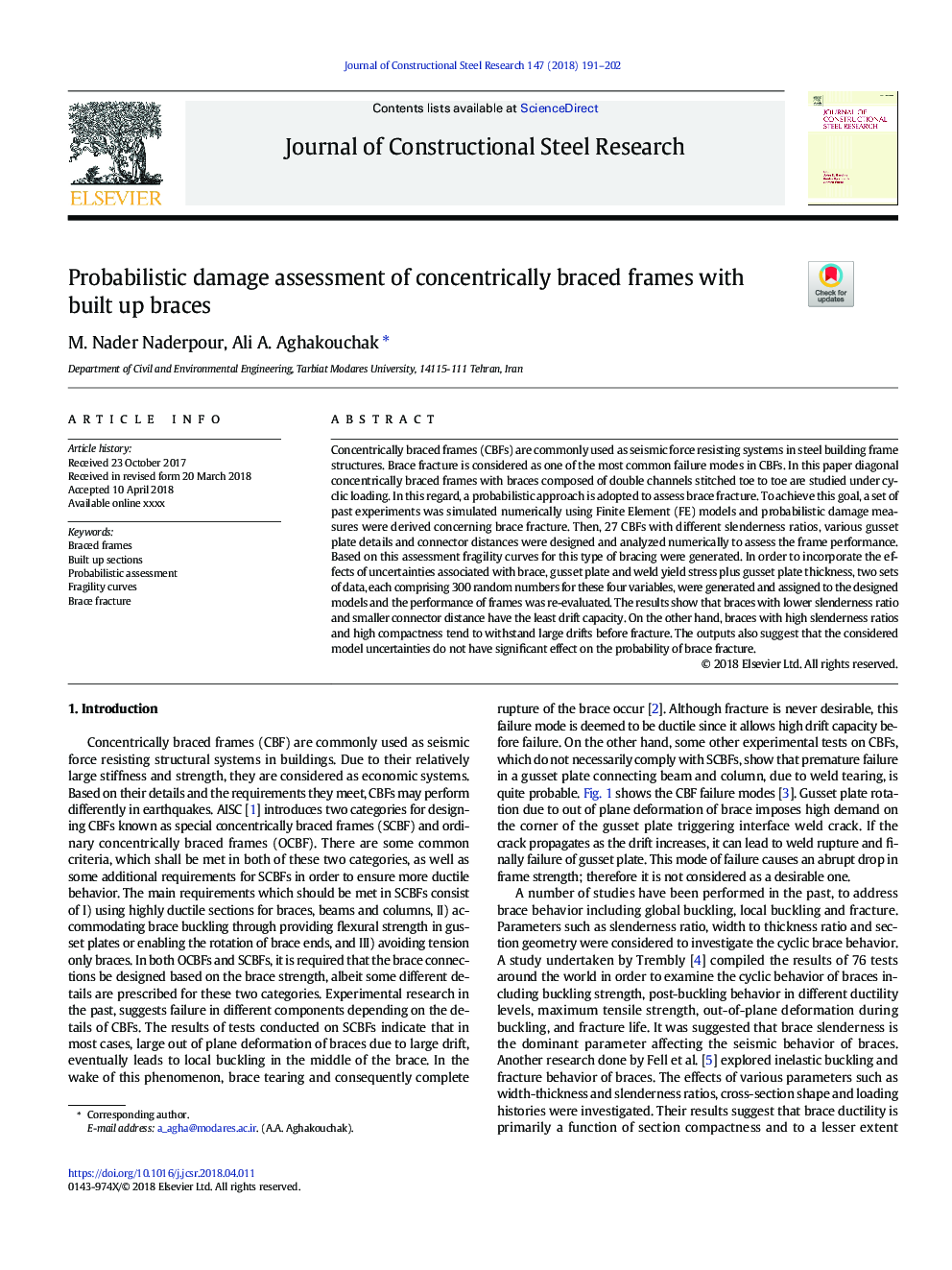| Article ID | Journal | Published Year | Pages | File Type |
|---|---|---|---|---|
| 6750446 | Journal of Constructional Steel Research | 2018 | 12 Pages |
Abstract
Concentrically braced frames (CBFs) are commonly used as seismic force resisting systems in steel building frame structures. Brace fracture is considered as one of the most common failure modes in CBFs. In this paper diagonal concentrically braced frames with braces composed of double channels stitched toe to toe are studied under cyclic loading. In this regard, a probabilistic approach is adopted to assess brace fracture. To achieve this goal, a set of past experiments was simulated numerically using Finite Element (FE) models and probabilistic damage measures were derived concerning brace fracture. Then, 27 CBFs with different slenderness ratios, various gusset plate details and connector distances were designed and analyzed numerically to assess the frame performance. Based on this assessment fragility curves for this type of bracing were generated. In order to incorporate the effects of uncertainties associated with brace, gusset plate and weld yield stress plus gusset plate thickness, two sets of data, each comprising 300 random numbers for these four variables, were generated and assigned to the designed models and the performance of frames was re-evaluated. The results show that braces with lower slenderness ratio and smaller connector distance have the least drift capacity. On the other hand, braces with high slenderness ratios and high compactness tend to withstand large drifts before fracture. The outputs also suggest that the considered model uncertainties do not have significant effect on the probability of brace fracture.
Related Topics
Physical Sciences and Engineering
Engineering
Civil and Structural Engineering
Authors
M. Nader Naderpour, Ali A. Aghakouchak,
